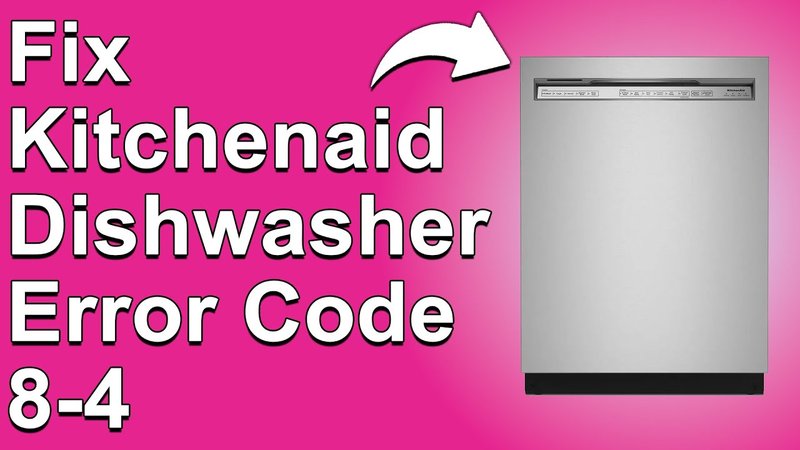
Picture this: ignoring the “LE” error is akin to continuing to drive your car with the check engine light flashing. Sure, the car might run for a while, but eventually, you’ll need to deal with the consequences. Likewise, neglecting to fix this error can lead to water damage in your kitchen, higher utility bills, or even a completely non-functional dishwasher. Understanding what causes this error and its potential effects is important for every homeowner using a KitchenAid dishwasher.
Understanding the Causes of the “LE” Error
You might be wondering, “What actually triggers the ‘LE’ error in my dishwasher?” Well, the causes can be varied, but typically revolve around issues with water leaks. Imagine a hidden leak in a pipe causing gradual damage — it’s similar here. One of the frequent culprits is a defective door seal. The seal around your dishwasher door is crucial in preventing water from escaping during the wash cycle. Over time, this seal can wear out or accumulate debris, leading to leaks that trigger the “LE” error code.
Another potential cause is an issue with the dishwasher’s water inlet valve. Think of it as a faucet that regulates how much water enters the appliance. If this valve malfunctions, it might either let in too much water or not shut off properly, both of which can cause leaking. Additionally, the hose connections inside the dishwasher can become loose or cracked, which is another common reason this error might appear.
Finally, improper installation might also play a role. If your dishwasher wasn’t set up correctly from day one, the way it drains water could be misaligned, resulting in leaks and frequent error codes. Ensuring that all components are installed properly can save you a lot of trouble in the long run.
The Consequences of Ignoring the Error
Ignoring the “LE” error can lead to a cascade of problems, much like ignoring a small leak in your roof can eventually ruin your attic. First and foremost, continued leaks can cause water damage to your kitchen floor or cabinetry. Water might seem harmless, but it can lead to warping, mold growth, and even structural damage over time, all of which are far more costly to repair than addressing the initial error.
Moreover, your dishwasher’s efficiency could take a hit. A compromised appliance works harder to complete each cycle, which could increase your water and electricity bills. After all, a leaking dishwasher is like a car running on a bad battery—struggling but still consuming energy. In the worst-case scenario, prolonged negligence could lead to your dishwasher breaking down entirely. Once that happens, you’ll either be looking at an expensive repair bill or the cost of a brand new machine.
Finally, there’s the matter of hygiene. When leaks occur, they may not just affect the floor but also the cleanliness of your dishes. Water that remains at the bottom of the dishwasher can harbor bacteria or leave your plates and glasses with stubborn watermarks, leaving them less clean than you’d like.
Steps to Fix and Prevent the “LE” Error
So, what should you do if you see the “LE” error? First, don’t panic. Start by checking the door seal. If it looks worn or damaged, replacing it might solve the problem. It’s akin to getting a new gasket on a leaky garden hose—simple, yet effective. Next, inspect the water inlet valve and hose connections. If these components appear faulty or loose, you may need to tighten or replace them.
If these steps sound daunting, don’t hesitate to call a professional. An experienced technician can diagnose and fix the issue, ensuring your dishwasher runs smoothly again. Meanwhile, prevention is key to avoiding future errors. Regular maintenance checks, such as inspecting seals and hoses, can catch issues before they escalate. Also, make sure your dishwasher is always level and properly installed.
In conclusion, tackling the “LE” error code promptly can save you a lot of trouble down the road. By understanding the causes and implications, and taking immediate action, you can keep your KitchenAid dishwasher in top shape, ensuring your dishes come out sparkling clean every time. So, don’t wait—address that pesky “LE” error today!